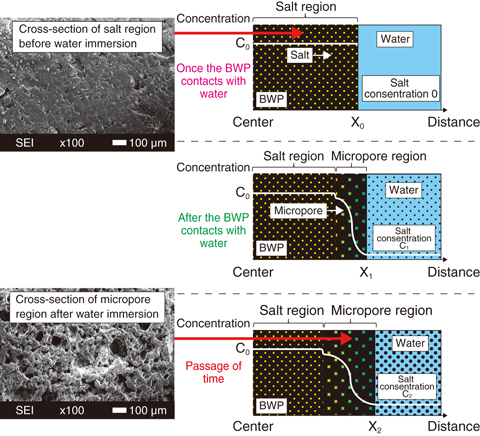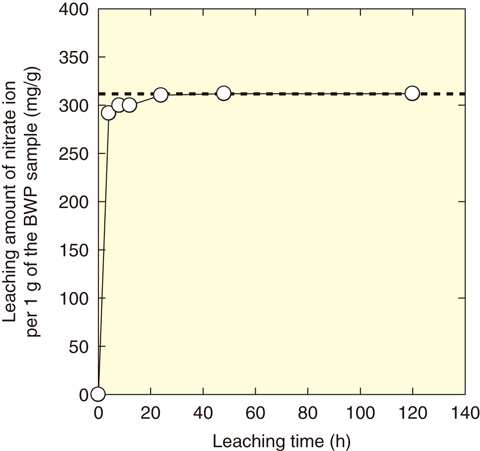
Fig.8-6 Schematic images of the deformation and diffusion of a component in the BWP

Fig.8-7 Leaching behavior of nitrate ions
Low-level radioactive concentrate generated by the reprocessing of spent nuclear fuels was solidified as bituminized waste product (BWP) at the Tokai reprocessing plant from 1982 to 1997. Some of the Tokai BWPs were categorized as TRU wastes involving nitrate salts and will be co-disposed alongside high-level radioactive wastes (HLW) as low-level radioactive wastes suitable for geological disposal. If the BWP comes in contact with ground water after disposal, the reductive environment would change into an oxidative one through nitrate ion leaching from the BWP. This change is expected to result in corrosion of box-shaped waste containers for the BWP and of overpacking of co-disposed HLW. Hence, before disposal of the BWP, it is important to predict how nitrate ions will leach from the BWP and to prepare processing technologies to minimize their influence upon the disposal environment. We investigated the leaching behavior of nitrate ions in the BWP and developed a technique to remove them.
When the BWP comes into contact with water, water penetrates into it, dissolving soluble salts. Owing to this penetration, nitrate, nitrite, and sodium ions are leached out at the same rate. Thus, it was found that the BWP swelled by the water uptake and that micropores appeared by dissolution of the salts. This indicates that nitrate ions leached out according to diffusion in the BWP, swelling and forming micropores. Since the swelling of the BWP leads to make it longer for a distance from the center to the interface between the BWP and water, it can be predicted that the leaching rate of nitrate ions is delayed (Fig.8-6). In addition, under a restraint condition such as a disposal environment in which the BWP cannot expand, the swelling compresses the micropores near the surface of the BWP. It can also be predicted that the leaching rate of nitrate ions can be delayed by the compressing effect of the micropores.
As an application of this study, we synthesized bituminized waste samples involving nitrate salts and developed a technique to remove these salts from finely ground BWP samples (1–2 mm size) by water immersion (i.e., a water-leaching method). Our results showed that we could remove approximately 100% of the nitrate ions (310 mg/g) within 24 h (Fig.8-7). This technique can be used to convert BWP with 45wt% salt into de-nitrated BWP with 5wt% insoluble salt. Furthermore, if we apply compressing treatment to the de-nitrated BWPs, 16–20vol% of the BWP can be reduced on behalf of the volume of the nitrate salts occupied. Nitrate solution removed by this technique can be disposed of as a cementitious waste product after nitrate decomposition by a catalyzer.
On the basis of the above results, we expect that the developed technique may lead to a reduction in the disposal-environmental impact by nitrate salts.